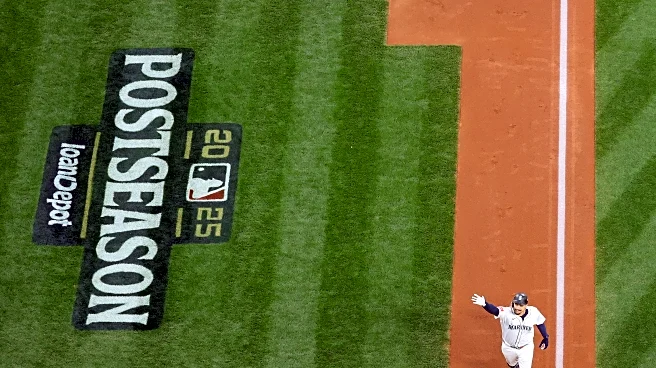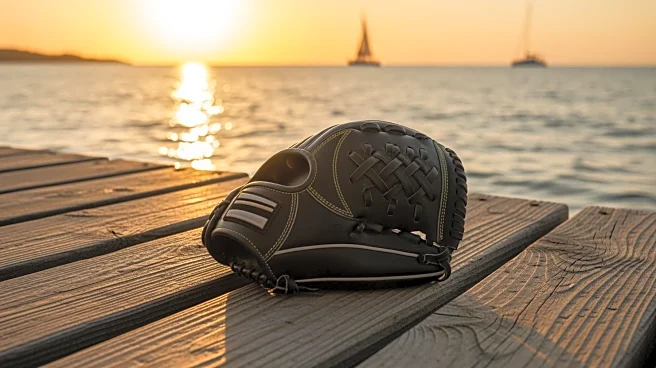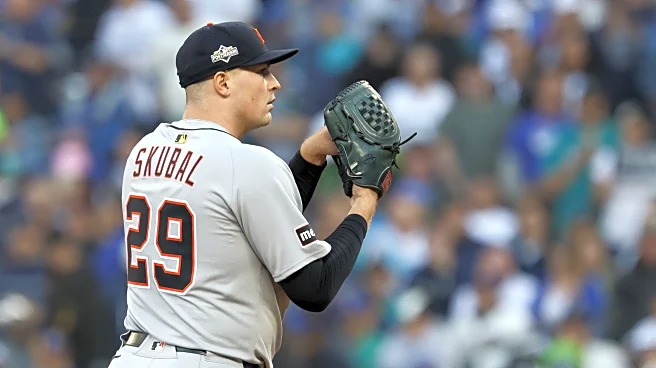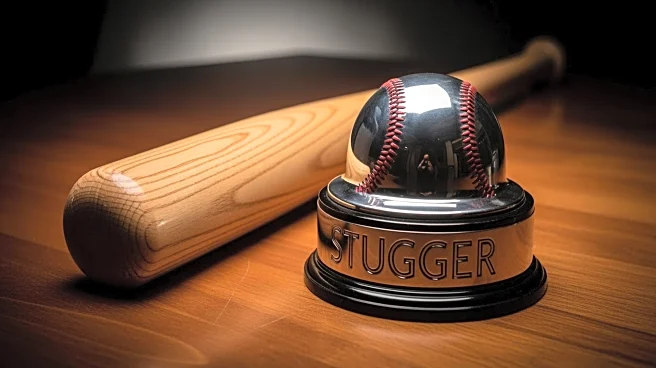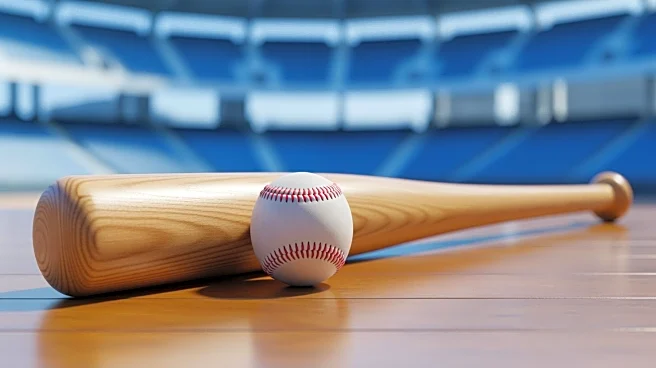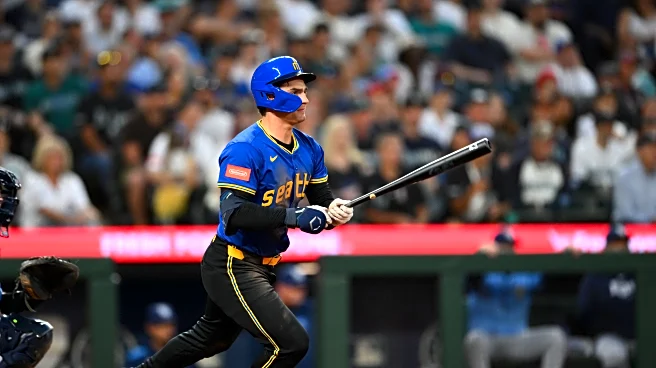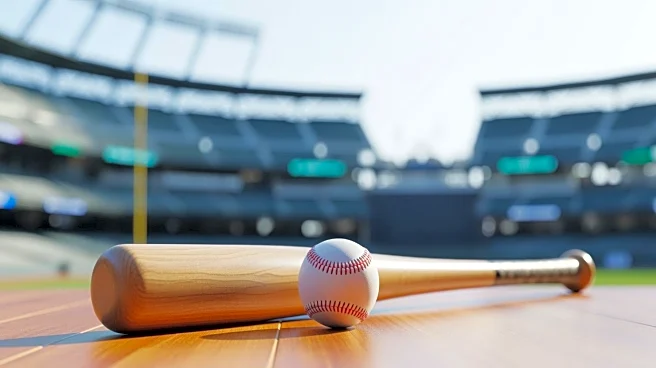The Mariners look like early favorites in the American League.
Josh Naylor is back. After a 25 days as a free agent, reports Sunday evening suggest Naylor will return to the Mariners on a five-year deal.
The rest of the terms are unknown. Naylor is scheduled for a physical Monday to finalize the deal, and a formal announcement is sure to follow.
I’d already planned to write about projections this morning as a sort “where things stand” in the early offseason. I’m a fan of projections. They help us estimate how a player (or team) is expected to perform in the future, given their past performance and the past performance of players like them. They’re a statement of quality and a hedge against our best (and worst) assumptions.
The system I prefer is Steamer because it’s easy to use (thanks to Fangraphs). Steamer is not as bullish on this version of the Mariners as other systems (like ZiPS), but they are recently accurate: the 2025 Mariners were projected for 40.7 fWAR, and they finished with 40.7.
Not much has changed from the analysis I planned for today. The Mariners began the offseason looking like one of the best teams in MLB at the beginning of the offseason, and most of the work they’ll need to do maintain that standing is still in front of them. But the quick reunion with Naylor underscores the opportunity ahead: the Mariners now have arguably the best non-Dodgers roster in MLB.

Steamer projects the Mariners at 40.44 fWAR — second best in MLB. I wouldn’t get too caught up in the decimal that exists between them and the Yankees, as the next update could shift a few 10ths of wins either way. Those decimals are less of a factor, however, when considering the near five-win head start the Mariners have on the Astros for the best roster in the AL West.
Mariners’ batters rank third at 24.9 fWAR. They have the third and fifth best projected batters in MLB (Julio Rodríguez and Cal Raleigh). J.P. Crawford ranks 83rd in MLB and Naylor is 93rd. The rest of depth chart is just OK. They don’t really bottom out anywhere, but they’re on the lesser side of average at five positions.
Mariners’ pitchers rank 11th at 15.6 fWAR; they have the 21st, 25th and 26th best projected pitchers in MLB (Bryan Woo, Logan Gilbert and George Kirby). Luis Castillo looks like one of the best fourth starters in MLB, and the top of the bullpen is still very good. There’s not much projected quality beyond them.
The tables below shows the players with the most projected playing time by Steamer and their projected fWAR:

Few if any teams have a better top of roster. The task in front of the Mariners this offseason, before Naylor and still now after, will be raising the floor.
Steamer from the outset considered first base the easiest place to upgrade. The Mariners seemed to agree and made resigning Naylor their top priority. They brought back Naylor as the second best projected first baseman in free agency (behind Pete Alonso) and the 17th best free agent overall.
The next places to improve are the bullpen, corner outfield, infield and designated hitter. The team has implied interest in bringing back other recently departed free agents. Eugenio Suárez is the 14th best projected free agent (2.4 fWAR) and Jorge Polanco is the 22nd (1.9 fWAR). There are other choices as well: Steamer projects about 140 fWAR still available in free agency. The top 100 are listed in the table below. These players will sign somewhere, and many will sign with the other top teams. The Mariners will need to keep adding to maintain their top-tier status.
Pay to win
Adding more players will cost more money.
Jerry Dipoto said he expects payroll in 2026 to be similar to the end of 2025. Specifically, he said, “similar to where we ended the year, as a starting point.” He also said they would again be “bold” as far as taking on money midseason. What that means isn’t entirely clear. Does he mean payroll on Opening Day 2026 will roughly match the final 2025 payroll? Or that the 2026 squad will eventually return to the final 2025 payroll at the trade deadline? I’m not sure.
The 2025 roster reached $184 million in September, according to Darren Gossler’s payroll tracker. That fell to $124 million after the season with the loss of Naylor, Suárez, Polanco and others to free agency. Payroll then grew to about $134 million with the team option for Andrés Muñoz’s and a few minor moves. Assuming the most generous interpretation of Dipoto’s quote, that would imply the Mariners had about $50 million once free agency began.
And now it’s begun. Naylor is now back on the payroll. The terms are unknown, other than that it’s a five-year deal. Fangraphs’ crowdsourced a Naylor deal at $20 million per year, which would bring the Mariners to about $154 million. If that’s in the ballpark, the Mariners would still have another $30 million to spend before reaching the mark set at the end of last year.
Since COVID, the most payroll the team has added in an offseason was about $21 million (2022). The least they’ve added is about $12 million (2023). A $50 million offseason would be an aberration, though they could do that and still add another $34 million midseason (as they did in 2025) while staying under the luxury tax threshold.

That money would go far on the (projected) field. With another $30 million and a WAR total commensurate with the average $/WAR (roughly $8 million per 1.o fWAR), that’s about 3.75 fWAR from where they are now. They would enter 2026 with 44.2 projected fWAR, which would keep them in the league’s top tier and give them by far their best projections ever.
If the Mariners were to do nothing else, they’d enter 2026 exactly where they entered the last several seasons — in a tier of “good not great” teams that are still capable of deep playoff runs. The plot below shows how their projections have changed over year; Steamer projections have been spot on in four of the last six non-COVID years.

The Mariners often seem to discount the present. They’ve built reasonably competitive teams and gotten reasonably competitive results. But they’ve never given a single season their undivided attention from start to finish. I can’t yet say whether that will change in 2026, only that no matter what they do going forward, good or bad, they will now do it as the defending AL West champions.
